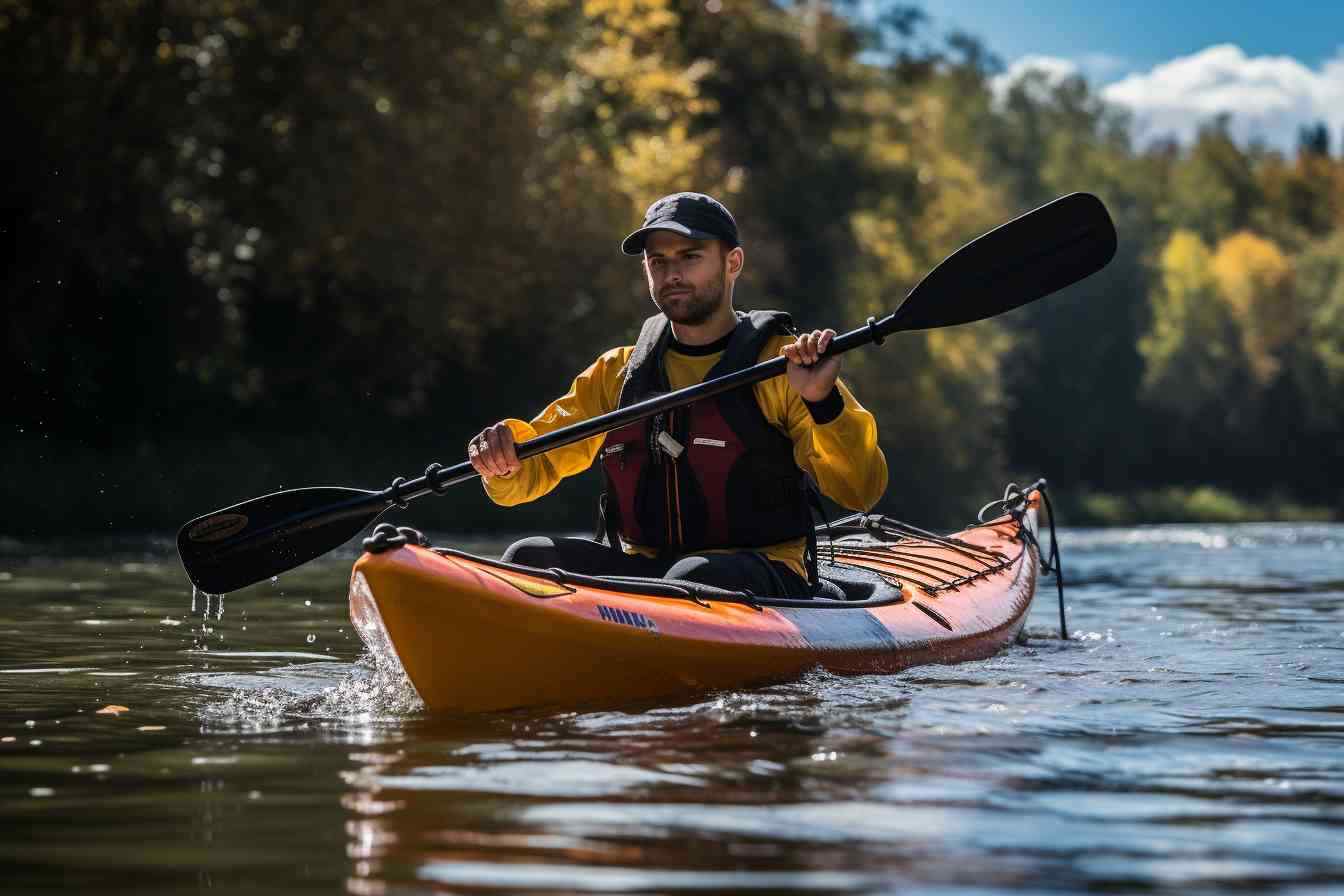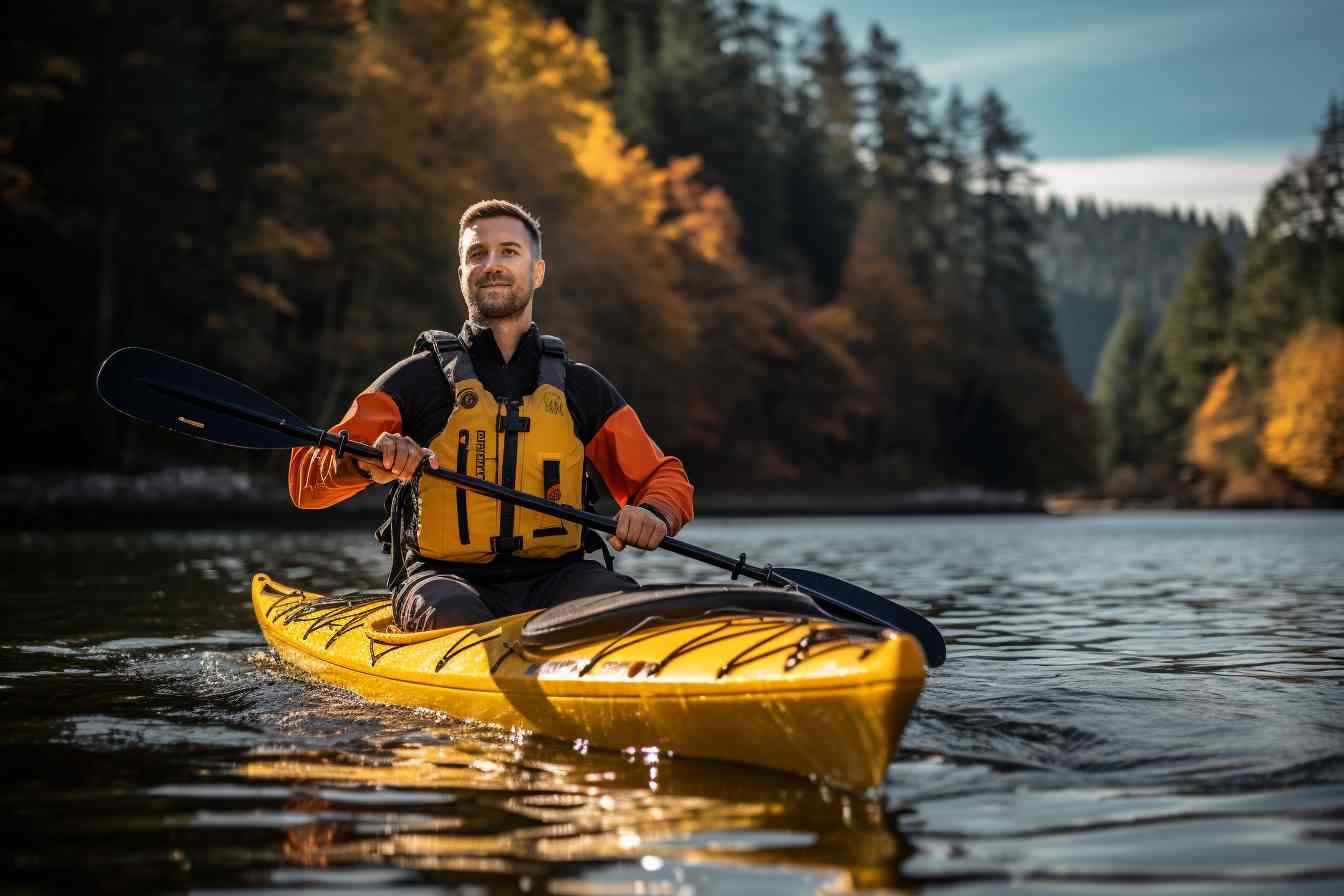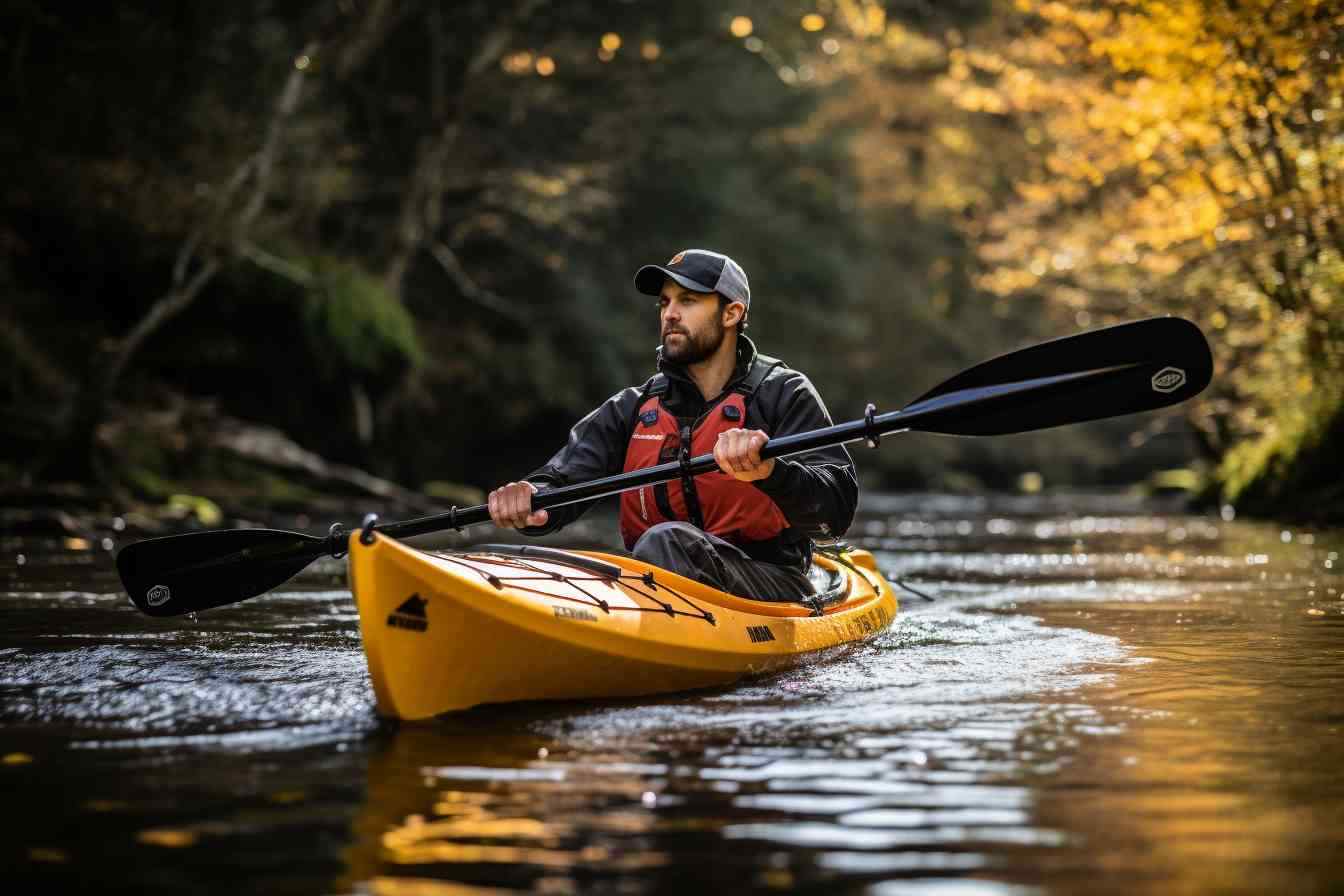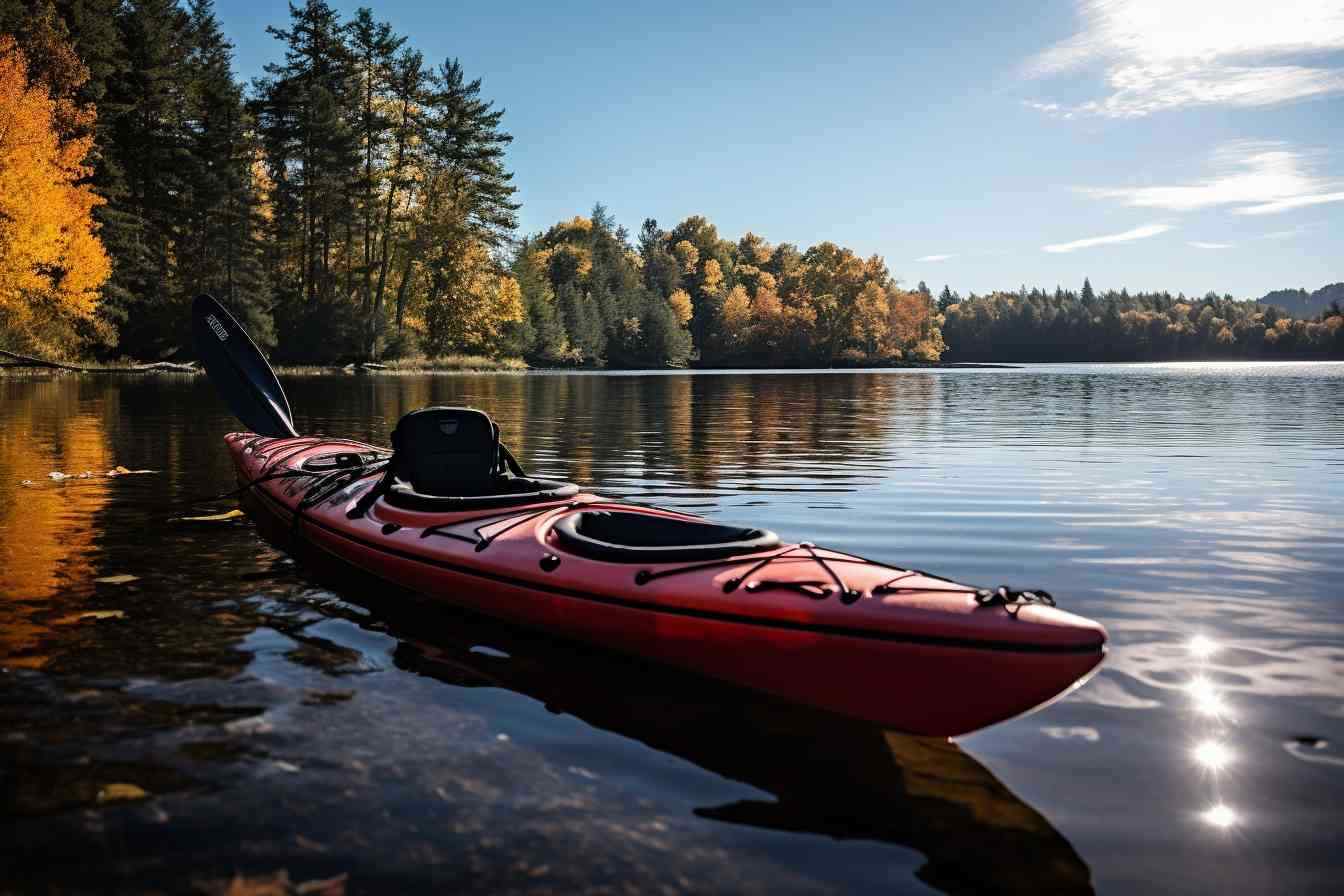Mastering the Art of Paddle Selection Choosing the Perfect Kayak Paddle

Summary
- Intro: How To Choose A Kayak Paddle
- How Do I Know What Kayak Paddle To Buy?
- Which Paddle Should I Use In My Kayak?
- Is It Better To Have A Longer Or Shorter Kayak Paddle?
- Do Expensive Kayak Paddles Make A Difference?
- Final Verdict
- Frequently Asked Questions
- Q1: How do I choose the right size kayak paddle?
- Q2: Are there specific types of kayak paddles for different kayaking activities?
- Q3: Does the material of the kayak paddle make a difference?
- Q4: How much should I expect to pay for a good kayak paddle?
- Q5: What is the impact of the paddle’s blade shape on my kayaking?
- Q6: How do I maintain my kayak paddle?
- Q7: How should I hold a kayak paddle properly?
- Q8: Does the feathering of kayak paddles matter?
- Q9: What is the advantage of a bent shaft kayak paddle?
- Q10: Do I need a spare paddle when kayaking?
- Related Video
- Frequently Asked Questions
Intro: How To Choose A Kayak Paddle

Alright, let’s dive into this subject and paddle our way towards understanding how to choose the primo kayak paddle for your needs. Now, I might not be in your shoes, but judging from my extensive experience, it is quite a darn task to pick the right paddle. But hey, no worries, we’ll figure this out together.
We first need to think about the paddle’s size. I mean, you wouldn’t wear shoes that don’t fit, right? The same goes for kayak paddles! Your height and the width of your kayak significantly impact the paddle size you need. I’ve seen folks trying to row with the wrong size, and trust me, it’s no fun.
Another piece of the puzzle is the blade’s design. Wide blades provide more power, which is superb if you’re into white water kayaking, but thinner blades are less tiring – ideal for long, calm water trips.
Then there’s the material to consider. Lightweight materials like carbon fiber are easier to handle, but they can be quite pricey. On the other hand, aluminum and plastic paddles are budget-friendly but a tad heavier, making them much more tiring in the long run.
Lastly, we mustn’t forget the paddle’s shaft shape and design. Straight shafts are common and inexpensive, but many kayakers swear by bent shaft paddles. They claim it offers a more ergonomic hold, reduces fatigue, and causes less strain on the wrists.
And there you have it – a quick rundown on how to choose a kayak paddle. Keep these points in mind, and I’m sure you’ll find your perfect paddle match in no time!
How Do I Know What Kayak Paddle To Buy?

Well, choosing the right kayak paddle isn’t as straight forward as it might seem. It’s a delicate balance between your height, the width of your kayak, and the type of paddling you plan to do. While most people tend to focus on getting the perfect kayak, the paddle is often an afterthought. But, tell you what – choosing the right paddle can significantly enhance your kayaking experience.
Now, here’s what you gotta look for when choosing a kayak paddle. First thing’s first - the length of the paddle. This depends on two things: your height and the width of the kayak. If you’re a bit on the taller side or if your kayak is wide, then you’ll need a longer paddle. If not, a shorter one will suffice. You see, the goal is to comfortably reach the water without overextending your arms or straining your back.
Next thing to think about is the type of paddling you’re gonna be doing. If you’re into quiet, calm, and relaxing paddles on a serene lake, a lightweight paddle with smaller blades is your best bet. Now, if you’re more of the adrenaline junkie type, who’s going to be battling white waters, you might want a heavier, durable paddle with larger blades for better control and maneuverability.
The material of the paddle is also important to consider as it directly affects the paddle’s weight and durability. Aluminum, fiberglass, and carbon fiber are the typical options you’ll find out there. Though aluminum is the heaviest, it’s also the most affordable. On the other hand, carbon fiber paddles are the lightest and most comfortable but they come with a hefty price tag.
Lastly, don’t forget to consider the design of the paddle blade! Do you prefer a feathered design, where the blades are at an angle to each other, or do you prefer an unfeathered design where the blades are parallel? Again, this boils down to personal preference.
So there you have it, a crash course on how to pick the right kayak paddle. Remember, the best kayak paddle is the one that feels the most comfortable and efficient for you. Happy paddling!
Which Paddle Should I Use In My Kayak?

Alright, let’s dive in. Just so we’re clear, there’s no one-size-fits-all paddle for every kayak. You need to look at various factors such as kayak type, paddle length, and materials to find the perfect fit for you. Now, I know this sounds daunting, but trust me, it’s not.
First thing’s first – what type of kayak do you have? A leisure kayak, a fishing kayak or a touring kayak? Well, each type requires different paddle lengths due to variations in width and your own personal size. If your arms are constantly straining to reach the water, that paddle’s probably too short, buddy. On the flip side, if it feels like you’re lugging around a flagpole, your paddle might be too long. A good starting point? Measure the width of your kayak and your torso; there’s an optimal paddle length for everyone.
Next, let’s chitchat about materials. Plastic blades are affordable and tough, but let’s be honest, they’re heavy and bend easily. If you’re after something stronger, consider Fiberglass. They’re lighter, more durable, and the bright colors are a nice bonus. For top performance paddles, go for carbon fiber. They’re uber light, quite stiff and yes, more expensive, but they’ll see you through even the trickiest of waters.
In the end, it comes down to your personal preference, your budget, and what feels most comfortable to you. My advice? Test out a few paddles before making a decision. We’re all different, and what works for one kayaker might not work for another. Just remember, on the water, your paddle is your best friend. Choose wisely!
Is It Better To Have A Longer Or Shorter Kayak Paddle?

Choosing a kayak paddle can be a tough decision indeed. A kayak paddle’s length does matter. You might think, “Why? What’s the big fuss? It’s just a paddle!” However, let me tell you, it’s more than just an extension of your arm.
The ideal length of your kayak paddle depends on multiple factors. Now, the question arises, is it better to have a longer or shorter kayak paddle? Well, that largely depends on the size of the kayak and the paddler.
If you’re taller or your kayak is wide, a longer paddle can be more effective. You see, the extra length helps you reach the water better and allows for a stronger stroke. However, they can be rather heavy, which might tire you out quicker.
On the contrary, shorter paddles tend to be lighter and easier to handle. Especially if you’re petite or if your kayak is on the narrower side, a shorter paddle could be your perfect match. It’s less about the strokes’ power and more about the agility and quickness of the strokes.
Then again, remember that there’s no absolute answer. Each paddler has unique needs and comfort levels, and what works for one might not work for another. A paddle is an essential tool, so make sure to take your time choosing one that fits you perfectly. Remember, a good kayak journey is less about the destination and more about enjoying the glide.
How To Choose A Kayak Paddle Calculator
Well, hello there! I understand you’re in the market for a fresh, new kayak paddle, but how do you pick the right one? There’s actually a somewhat mathematical approach to it – a kayak paddle calculator, if you will. So let’s dive into it.
-
There are a number of online apps that can “calculate” the ideal kayak paddle size for you. You simply input your height, the width of your kayak, and your paddle style - high-angle or low-angle - and voila! The calculator offers you a suggested paddle length.
-
Your paddling style is important in determining the right paddle size. Typically, a low-angle paddler – who tends to keep the paddle closer to the water – will require a longer paddle. On the other hand, high-angle paddlers, who keep their paddle vertical, will find a shorter paddle more efficient.
-
The type of kayak you’re using will also factor into your calculations. A wider kayak will often require a longer paddle. And likewise, a narrow touring kayak pairs well with a shorter paddle, allowing for an efficient, high-angle paddling style.
-
The paddle’s blade size should also be taken into consideration. Larger blades move more water, generating more power for each stroke. However, they demand more effort to operate, which might not be ideal for longer excursions or for those who prefer a more relaxed paddling style.
-
A few additional factors like your physical strength, endurance, and even your torso length might also affect your ideal paddle length. Remember, comfort is the key, and you need a paddle that you can use efficiently for extended periods without straining your muscles.
-
Remember when I said it’s almost mathematical? Well, there’s a rule of thumb that suggests you stand the paddle up vertically, reach an arm up, and try to hook your fingers over the top of the blade. If you can do this comfortably, you’re approximately in the right size dimension.
-
Don’t forget to consider the weight of the paddle. While a heavier paddle might provide more stability and power, it could also tire you out more quickly. Conversely, a lighter paddle might be less taxing, but it might also be less durable.
-
Last but certainly not least, let’s not forget about the material. The material of the paddle not only impacts durability but also performance. Fiberglass and carbon paddles are lighter and offer better performance, but they’re also more expensive. Aluminum and plastic paddles are more affordable, but they might be heavier and less efficient.
So, don’t rush into buying the first paddle you see! Using a kayak paddle calculator can help guide your decision, and ensure you end up with a paddle that’s the perfect fit for you. Happy paddling!
Do Expensive Kayak Paddles Make A Difference?
I’ll tell you what, when it comes to kayaking, the difference between a cheap and pricy paddle can feel as vast as the ocean itself. Some might argue that a paddle is a paddle, but those who’ve truly experienced the difference know how much a high-quality paddle can enhance the whole kayaking experience.
You may wonder if spending those extra dollars is really worth it. I mean, they both do the job, right? But let me assure you, there’s a lot more to it! What you’re paying for is not just a brand name or a fancy look, it’s the improved efficiency, comfort, and durability that can make a lengthy paddling session feel like a breeze. Premium paddles are lightweight, designed for effortless handling, and can significantly reduce fatigue. You’ll definitely feel that difference after a few hours on the water!
Another key factor here is durability. While you might save some bucks initially buying cheaper options, those paddles can wear out or break easier, leaving you to buy another one. Higher quality paddles are built to last, often from materials like fiberglass or carbon fiber, which withstand the test of time and tough conditions.
However, just because a paddle is expensive doesn’t mean it’s the best for everyone. The ideal paddle really depends on you – your body size, paddling style, and the type of kayaking you prefer. Consider this, an expensive paddle that doesn’t fit you properly is not going to enhance your experience but may actually hinder it.
So, do expensive kayak paddles make a difference? Overall, I’d say a resounding yes - but it’s essential to consider all factors and make sure it’s the right fit for you. After all, even the priciest paddle won’t do you any good if it doesn’t suit your needs! So next time you’re buying a paddle, remember, it’s an investment, not just an impulse buy.
Final Verdict
Let me tell you, folks - choosing the perfect kayak paddle isn’t as simple as just picking up the nearest one. Not at all! It’s a process that demands your keen attention to multiple factors, and it’s pretty significant as it can greatly affect how you maneuver your kayak.
Size is one determinant that reigns supreme. You gotta consider your stature, the width of your kayak, and your style of paddling. A tall person with a wide kayak might need a lengthy paddle, while a petite kayaker with a slender boat can make do with a shorter one.
Then there’s the blade material – that’s the part you use to pull yourself through the water. Weight, durability, and performance vary widely among plastic, fiberglass, and carbon fiber blades. Plastic is inexpensive and sturdy, but it doesn’t provide the same performance as lighter and stiffer materials like fiberglass and carbon fiber.
Brace yourself for terms like ‘high-angle’ and ‘low-angle’ paddles - these refer to your paddling style. High-angle paddles are wide and short, perfect for aggressive paddling in rough water, whereas low-angle ones are long and slim, designed for leisurely paddling in calm waters.
Lastly, the shaft design and features also needs a mention. A straight shaft is the traditional pick, but if you’re looking for a more ergonomic grip, consider a bent shaft paddle. Adjustable length shafts offer versatility for different kayaks or paddlers, and feathered blades can reduce wind resistance.
Phew! That’s quite the lowdown, right? But hey, now that you’re ‘in-the-know’, I hope choosing the best kayak paddle for you will be as smooth as paddling on a calm lake on a sunny day. Happy paddling!
Frequently Asked Questions
Q1: How do I choose the right size kayak paddle?
Choosing the right size kayak paddle mainly depends on your height and the width of your kayak. Taller individuals and wider kayaks usually require longer paddles. For a detailed size chart, you might want to check out a reputable kayak supply store or manufacturer’s website.
Q2: Are there specific types of kayak paddles for different kayaking activities?
Yes, indeed! For instance, if you’re a casual kayaker on calm waters, a low-angle paddle is preferable. If you’re into whitewater or sea kayaking, a high-angle paddle with a shorter and wider blade would be a better fit.
Q3: Does the material of the kayak paddle make a difference?
It sure does! Different materials have different weights, durability, and cost. Plastic paddles are inexpensive but heavier. Fiberglass offers a balance between weight and durability, while carbon fiber paddles are lightweight but more expensive.
Q4: How much should I expect to pay for a good kayak paddle?
The price of a kayak paddle can range from $30 to $400 depending on the material, design, and brand. Remember, a higher price doesn’t always mean better performance. It’s about what suits your kayaking style and budget the best.
Q5: What is the impact of the paddle’s blade shape on my kayaking?
The shape of the paddle blade affects the power and efficiency of each stroke. A narrow blade provides less resistance and is excellent for long-distance kayaking. In contrast, a wider blade gives more immediate power, which is useful for quick maneuvers and fast-moving water.
Q6: How do I maintain my kayak paddle?
Cleaning it after each use, especially if you’re in sea water, helps prevent corrosion. Regularly inspect for cracks or wear and tear. Store it in a cool, dry place away from direct sunlight to maintain its lifespan.
Q7: How should I hold a kayak paddle properly?
When holding a kayak paddle, your hands should be shoulder-width apart. Knuckles should be aligned with the blade. One hand should clutch the paddle loosely, and one should rotate the paddle. It’s best to get a demo from a kayaking instructor for proper form.
Q8: Does the feathering of kayak paddles matter?
Feathering refers to the angle between the two blades of a paddle. Adjustable feathering can help reduce wind resistance and wrist fatigue. But again, it comes down to personal preference and paddling style.
Q9: What is the advantage of a bent shaft kayak paddle?
A bent shaft places your hands in a more natural position which can reduce fatigue and stress on your wrists during long paddling sessions. However, they might be more expensive than straight shaft paddles.
Q10: Do I need a spare paddle when kayaking?
Absolutely! It’s always a good idea to carry a spare paddle while kayaking. You never know what might happen out on the water, and a spare paddle can be a real safety net.


Comments